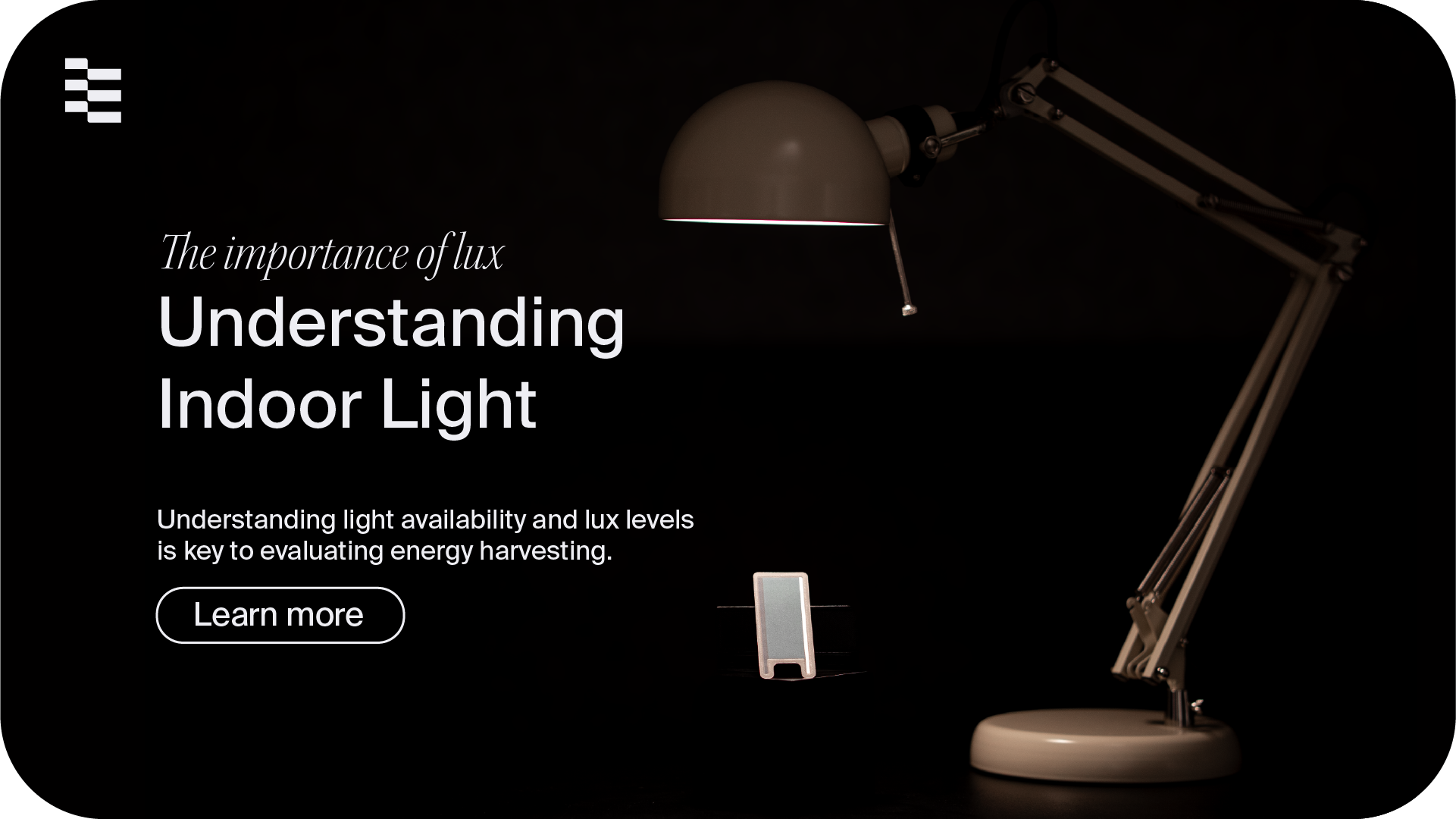
The Importance of Lux - Understanding Indoor Light
Understanding indoor light availability is essential for both functionality and comfort in indoor spaces. It’s also a critical factor when evaluating the possibility of using energy harvesting — capturing the energy from indoor light to power electronics. A key term in this context, particularly for indoor environments, is lux. But what exactly does it mean, and why does it matter?
What is Lux?
Lux is a unit of measurement for illuminance, indicating how much visible light is distributed over a given area. One lux equals one lumen per square meter. Lux also accounts for the human eye's sensitivity to different wavelengths, providing a standardized way to evaluate lighting in spaces. This allows environments to be quantified and designed to align with human visual perception, balancing comfort and efficiency.

Lux in Everyday Contexts
To understand lux in practical terms, let’s compare typical light levels in different settings:
- A sunny day outdoors typically measures around 100,000 lux.
- Office lighting usually ranges from 300 to 500 lux.
- Residential lighting in living rooms and kitchens measures around 100 to 300 lux.
- Candlelight provides about 1-10 lux.
The Role of Natural Light Indoors
Natural light contributes to indoor illumination but varies depending on factors such as the size and number of windows in a room, if it’s a clear sky or cloudy, and the time of day and year. It’s less predictable and harder to control compared to artificial light.
Measuring and Optimizing Light Levels
To capture indoor light for use as a power source, it’s essential to measure the light levels in different areas of a room. Lux meters can be used to assess light levels and help identify whether adjustments to the environment or product design are needed to optimize energy capture.
Unlocking the Potential of Indoor Light
Understanding lux levels and indoor light availability is essential when considering using light to power electronic devices. While sunlight provides roughly 1000 times more energy than indoor or artificial lighting, advances in indoor solar cell technology are enabling efficient energy capture even at light levels below 50 lux, providing enough energy to power your smart devices.